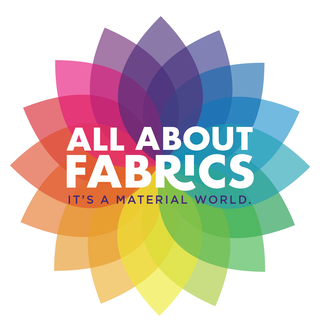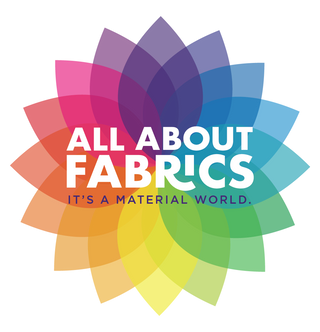Shopping for fabric can be as thrilling as it is daunting. Whether you're an avid sewer or just looking to refresh your home decor, knowing how to identify quality fabrics ensures that your projects turn out beautifully and last long. In this fun and friendly guide, we’ll explore some easy-to-follow tips on evaluating fabric quality based on texture, weight, and construction. Let’s dive in and become fabric connoisseurs together!
1. Understanding Fabric Texture: Feel the Difference
The texture of a fabric plays a significant role in determining its quality and suitability for various projects. Here's what to look for:
1.1. Softness vs. Stiffness: Quality fabrics usually have a consistent feel throughout. For example, a high-quality cotton should feel soft and smooth, while a silk fabric should have a luxurious, silky touch. Fabrics like wool or linen might feel more textured or crisp, but they should still feel comfortable and not overly scratchy or coarse.
1.2. Evenness: Run your fingers over the fabric to check for any inconsistencies. High-quality fabrics have a uniform texture with no uneven patches or lumps. If you feel irregularities, it might indicate poor manufacturing or lower-quality materials.
1.3. Breathability: For fabrics like cotton and linen, breathability is crucial. A good fabric will feel light and airy. If the fabric feels heavy or sticky, it might not be the best choice for garments intended for warmer weather.
2. Evaluating Fabric Weight: Balance is Key
The weight of a fabric can greatly influence its durability, drape, and how it will perform in your projects. Here's how to assess fabric weight:
2.1. Check the Fabric’s Thickness: Gently hold the fabric up to the light or fold it to see how thick it is. Fabrics like denim or canvas are heavier and more durable, while materials like chiffon or tulle are lighter and more delicate. Make sure the weight of the fabric suits your intended use.
2.2. Consider the Fabric’s Purpose: Different projects require different weights. For example, upholstery fabrics should be heavier and more robust, while lightweight fabrics are ideal for summer dresses. Ensure that the fabric weight matches your project’s needs.
2.3. Feel the Drape: The way a fabric drapes can be an indicator of its weight and quality. Hold the fabric up and let it fall naturally. A high-quality fabric will have a graceful, smooth drape without feeling too stiff or too flimsy.
3. Inspecting Fabric Construction: Look Beyond the Surface
The construction of a fabric affects its durability, appearance, and how well it holds up over time. Here’s what to examine:
3.1. Check the Weave: Fabrics are woven in various patterns, such as plain weave, twill, or satin. Each weave affects the fabric’s texture and durability. For example, a twill weave (like in denim) offers strength and durability, while a satin weave gives a smooth, glossy finish. Ensure the weave is consistent and free from loose threads or gaps.
3.2. Look for Selvage Edges: The selvage edge is the finished edge of the fabric that prevents fraying. Quality fabrics often have a well-finished selvage. If the selvage looks ragged or unfinished, it might indicate poor manufacturing quality.
3.3. Examine Stitching and Seams: If the fabric has been sewn into a sample or garment, check the stitching and seams. Quality fabric will have neat, even stitching with no loose threads or unraveling. This reflects the fabric’s durability and the care taken in its production.
4. Additional Tips for Quality Fabric Shopping
Beyond texture, weight, and construction, there are a few more things to keep in mind when shopping for quality fabrics:
4.1. Smell the Fabric: High-quality fabrics should have a neutral smell. If a fabric has a strong chemical odor, it might have been treated with harsh dyes or finishes that could affect its longevity and comfort.
4.2. Perform a Burn Test: If you’re uncertain about the fabric’s content, a small burn test can provide clues. Different fibers burn differently; for instance, cotton burns with a paper-like smell, while synthetic fibers can emit a plastic-like odor. However, use this method cautiously and only with a small sample.
4.3. Ask About Fabric Source: If you’re shopping at a fabric store or online, don’t hesitate to ask about the fabric’s origin and manufacturer. Quality fabrics are often produced by reputable brands known for their high standards.
4.4. Check for Colorfastness: If possible, test a small piece of the fabric for colorfastness by applying a damp cloth and rubbing gently. High-quality fabrics should not bleed or fade excessively.
5. Making the Right Choice: A Quick Recap
To sum up, identifying quality fabrics involves paying close attention to texture, weight, and construction:
- Texture: Ensure it’s consistent and appropriate for your project.
- Weight: Check for thickness and drape that fits your needs.
- Construction: Look for a well-made weave, finished selvages, and neat stitching.
By keeping these tips in mind, you’ll be well-equipped to make smart fabric choices that ensure your projects turn out beautifully and stand the test of time. Happy fabric shopping!


